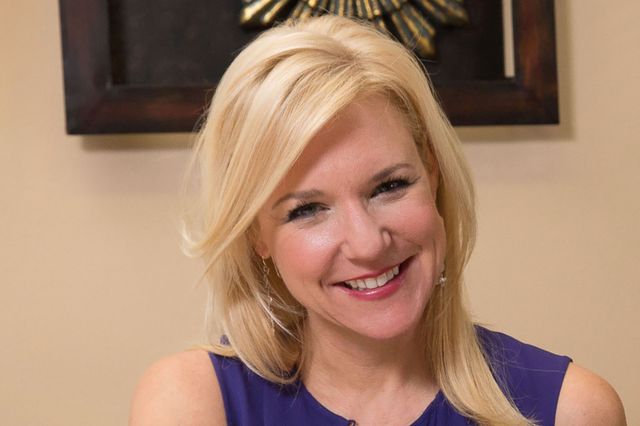When Martie Haselton was a graduate student at the University of Texas, she realized that what she found attractive in a man was changing and that her hormones were playing a role in that change and in finding a potential mate. She observed shifts in her behavior during certain times of the month, and noticed similar patterns in her female friends.

Haselton, today one of the world’s leading researchers on how ovulation cycles influence women’s sexuality, explains what she has learned — from hundreds of research studies, including many of her own — in her new book, “Hormonal: The Hidden Intelligence of Hormones — How They Drive Desire, Shape Relationships, Influence Our Choices, and Make Us Wiser” (Little, Brown and Company).
Women’s hormones contain a hidden “intelligence” that women can use to make the best decisions in their lives — decisions that will help them to choose mates, avoid danger, compete with female rivals and produce healthy children, said Haselton, a UCLA professor of psychology and communication studies.
“Female hormonal intelligence evolved to start early — and last a lifetime,” Haselton writes. Women’s hormone cycles embody half a billion years of evolutionary wisdom. She has argued against what she calls the centuries-old stereotype that hormonal conditions such as premenstrual syndrome, or PMS, and menopause are problems to be “fixed” or illnesses to be “cured.”
Haselton described women as “undercover ovulators.” “It’s not just the ovulatory phase that is concealed across the cycle, and across a woman’s lifetime,” she writes. “It is every phase. No one can look at a woman and discern if she’s menstruating or has PMS, or even tell — at least in the early stages — if she is pregnant or menopausal, and that is all to her advantage. Women have evolved to protect themselves from unwanted aggressions, male and female.”
Haselton untangles myth from reality and offers many insights about women’s hormonal cycles from puberty to menopause. Among her insights:
- Ovulating women tend to socialize more, are open to meeting more men, dance in ways that are rated in studies as more attractive, walk more, eat less, and flirt more than they do at other times.
- Beginning in 2006, Haselton began publishing research showing that women alter their behavior during “peak fertility.” Their voices often rise to a higher pitch, they often dress in more attractive clothing and their body odors are more attractive to men, she found. A woman’s sexual desires rise at high fertility and her calorie consumption drops. Haselton’s research shows that women feel more physically attractive when they are at peak fertility.
- Fertile women are more attracted to men with symmetrical features. In earlier times, male symmetry was likely to be a sign of strong genetic material, which a woman could pass on to her children.
- The human female in industrialized societies ovulates and menstruates more than any other species by far — about 400 cycles over a woman’s average life span.
- “Menstrual synchrony” — the idea that women living together synchronize their ovulation cycle phases — is probably incorrect. Normal ovulation cycles among a group of women can easily overlap — and appear to converge when in reality they do not, Haselton writes.
- It’s also a myth that there is any connection between the moon and a woman’s ovulation cycle. “It’s not the moon calling the shots — it’s your hormones and your brain,” Haselton writes.
- Estrogen is the “Iron Lady of hormones, the fuel for the feminine engine.” It is at its highest point during the first half of the cycle, just before ovulation. Women with higher levels of estrogen are considered by others as having more attractive facial features. Haselton writes that estrogen plays a role in curves in the body; high levels of estrogen contribute to the “classic hourglass figure.” Women with high levels of estrogen report they are more open to a sexual affair, and feel somewhat less committed to their partners.
- Rates of female infidelity in Western populations are estimated to be between 20 and 50 percent. Women who have affairs tend to go for the sexy, “good genes” guys.
Haselton, director of UCLA’s Evolutionary Psychology Laboratory, writes with humor and recounts many of her own personal experiences.
“For me,” she writes, “PMS involved fighting with my sweet little sister, wanting to blast all the mean girls off the face of the Earth and torturing my patient mother. When I told my mother I was studying hormones in my research, she smiled and said knowingly, ‘I’m not surprised.’”
Haselton knows she is addressing sensitive topics. “I’ve come to see that the facts get cherry-picked, then lost in a volatile mix of sexual politics,” she writes. “Misinformed sexists still find a way to twist the truth and use biological differences as a hurdle too high for women to clear.”
Women’s rights are enhanced, she said, by a greater understanding of how female bodies and minds work.
“We need to better understand how hormones affect our health and feelings of well-being,” Haselton writes. “We are not under strict hormonal control, but we can tap into a uniquely female power. In my view, every girl and woman benefits from understanding the scope of hormonal cycles — the hows, whens and whys. We should become familiar with the potential nudges that affect our behavior, so that we can exploit them for pleasure or ignore them to avoid peril in our relationships. And we should know that choosing to act on those behaviors is an individual choice, dependent upon our own preferences and goals.”





